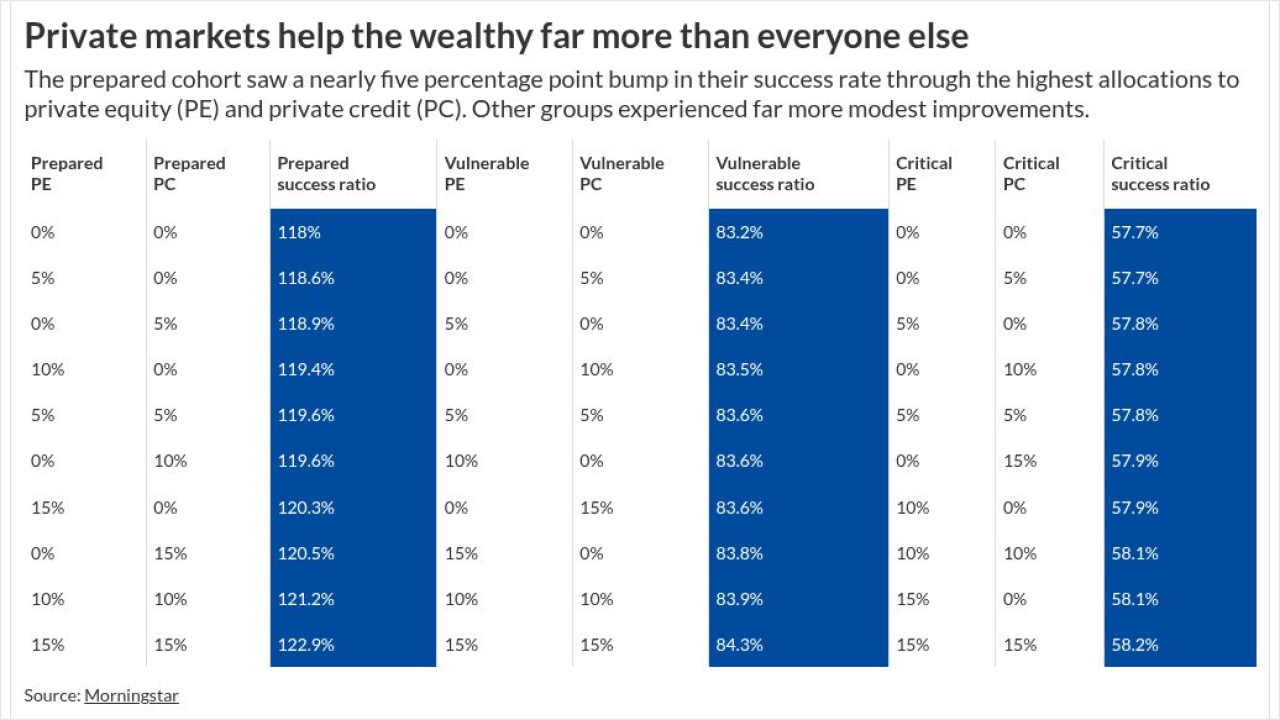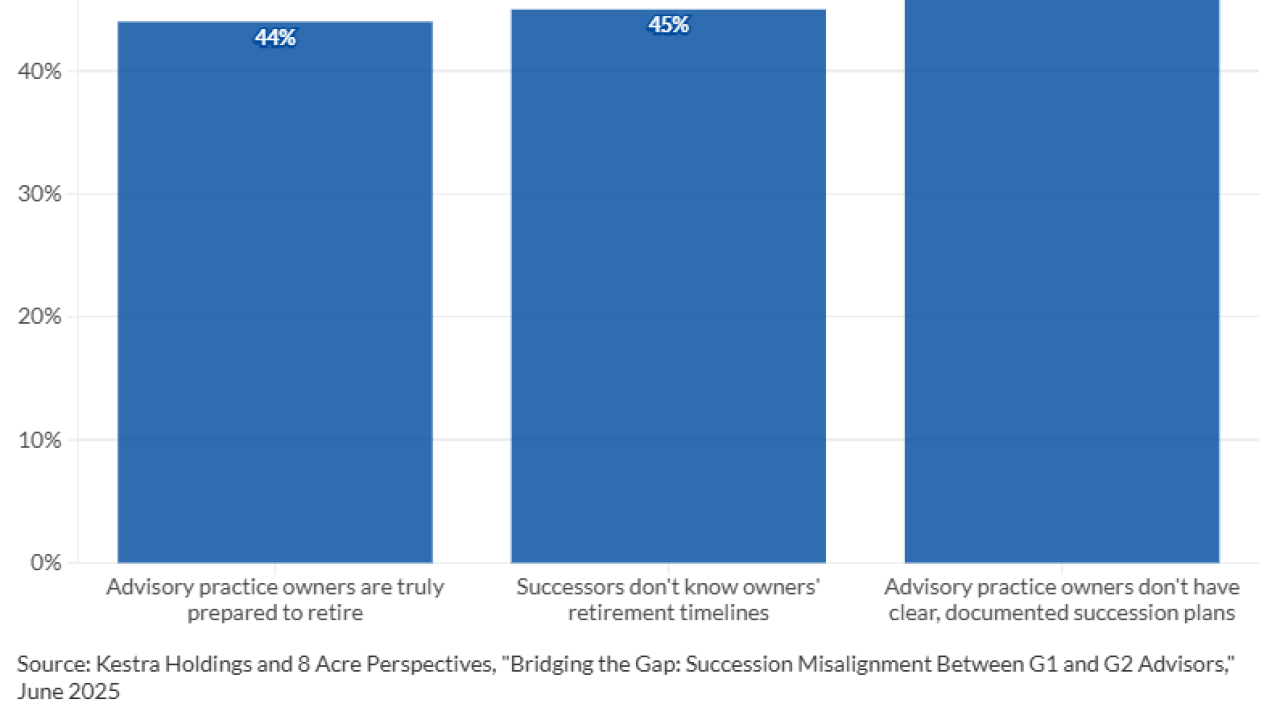The chief economist of The Dreyfus Corporation said Wednesday that world growth will slow down again in 2012, based on International Monetary Fund calculation methods.
Growth will slow from 5 percent two years ago and 3.7 percent last year to 3 percent in 2012, said Richard Hoey at a Dreyfus investment outlook event in New York. This will constitute a "global growth recession,'' he said.
Dragging down the world economy will be Europe, which the IMF projects will be in recession again this year. That recession in an area that constitutes one-fourth of world population will be the main driver of the drop of seven-tenths of a percent of growth in the global economy, he said.
The United States' economy will grow slightly better than last year's 1.8 percent growth. He projects growth of 2.5 percent. The IMF, on its own, projects that the United States economy will again grow by 1.8 percent (see chart, page 1).
For asset managers, getting returns for clients will mean moving back to smart stock selection, said Jonathan R. Baum, chairman and CEO of Dreyfus, which manages $1.3 trillion in assets and services $27 trillion.
But it will not be a "binary switch,'' said Baum. Investors won't just move overnight out of bonds and bond funds, into which they've poured more than $800 billion since the end of 2008. That will take years.
The kinds of stocks that should attract the most attention, said Tineke Frikkee, lead manager of the U.K. equity income strategy at Dreyfus' Newton Investment Management operation in London, will be dividend-paying stocks.
"Dividend yield will be the key driver of total return in the current environment,'' she said of slow growth and bouts of volatility in prices of stocks and other securities.
Stocks that do not pay dividends are inherently more volatile, she notes. A study of stocks in the Standard & Poor's 500 since 1975 shows, for instance, that non-dividend paying stocks are 60 percent more volatile in their price swings than dividend-paying stocks.
In addition, in the last 40 years, dividend growth and dividend yield have accounted for 77 percent of the total return of stocks, Frikkee said.
Nonetheless, institutional investors continued the pattern established late in 2011 of reducing allocations to equities, according to results of the State Street Investor Confidence Index for February 2012.
"Given that equity returns have been positive over the last one and three months, it is clear that these institutions have been 'liquidity providers' in the market, comfortable with rebalancing their portfolios at these higher valuations," stated Harvard University professor Kenneth Froot, who developed the index alongside Paul O'Connell of State Street Associates.
"At the same time, we do note a pro-cyclical bias to the reallocation: institutions are keen to hang on to, or even increase, their holdings of pro-growth sectors such as industrial and consumer discretionary stocks, while cutting back on consumer staples, healthcare and telecom stocks."
Globally, the Investor Confidence Index fell to 86.5, down 6.1 points from January's revised level of 92.6. However, the outlook of European investors, by contrast, improved, with the European ICI rising 4.0 points from January's revised reading of 91.2 to reach 95.2. In Asia, investor sentiment stayed relatively static, ticking down 0.3 points from a revised January reading of 96.6 to end at 96.3.
"The latest round of policy developments in Europe went some way towards lowering the risk of a catastrophic 'tail event' crisis, and this improved the mood of European investors," stated O'Connell.
"Asian investors held their outlook constant, though we did note that net purchases of Pacific ex-Japan equities by all global investors were relatively robust. It is among U.S. investors that the tendency to sell into the recent market strength was most pronounced."
The State Street Investor Confidence Index measures investor confidence or risk appetite quantitatively by analyzing the actual buying and selling patterns of institutional investors.
The index assigns a precise meaning to changes in investor risk appetite: the greater the percentage allocation to equities, the higher risk appetite or confidence. A reading of 100 is neutral; it is the level at which investors are neither increasing nor decreasing their allocations to risky assets.
Still appearing to be risky to large institutions are domestic stock mutual funds.
Investors withdrew an estimated $322 million from U.S. equity funds during the week ended February 22. That was the first week in the month, though, that such funds posted an outflow, according to Investment Company Institute figures.
Investors were kinder to foreign equity funds as they sent an estimated $1.13 billion their way, $123 million more than they did the week before.
As has been the trend for nearly a year, investors were most generous to bond funds, giving them an estimated $8.38 billion, their largest infusion this month. Of the $8.38 billion, $6.96 billion went to taxable bond funds with the remaining $1.42 billion going to municipal bond funds.
Hybrid funds - those that invest in both stocks and fixed income securities - had estimated inflows of $1.60 billion, down 40% from the $2.66 billion inflow they posted a week earlier.
All told, stock, bond and hybrid funds gained $10.79 billion in fresh investments for the week, their weakest inflow this month.
Margarida Correia of Bank Investment Consultant contributed to this report.





